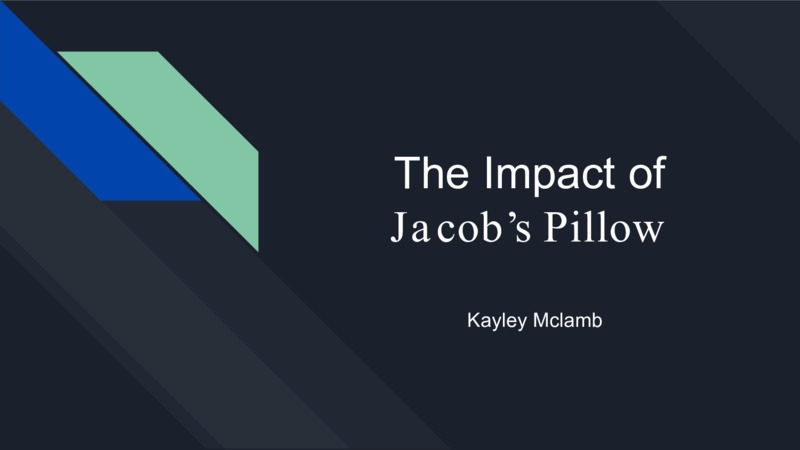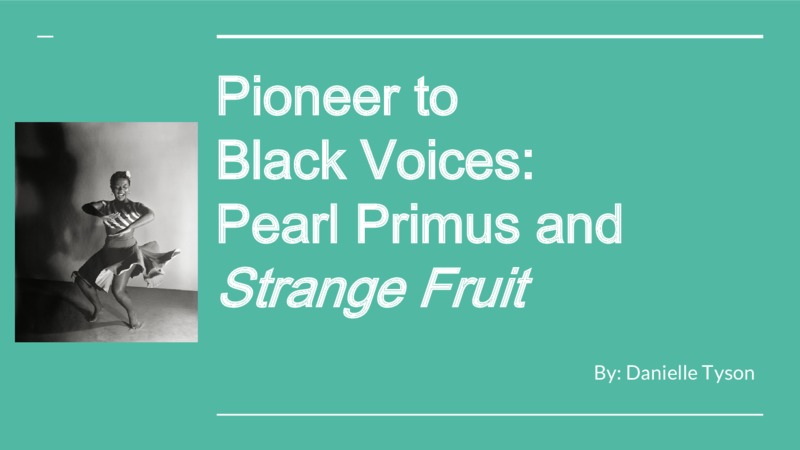Dance History II: Spotlight on Undergraduate Research
The exhibit Dance History II: Spotlight on Undergraduate Research highlights the research projects of six dance students enrolled in Dance History II taught by Kaus Sarkar in Spring 2020. During the course, students explored historical and cultural influences that affected the development of concert dance in the twentieth century. Research topics ranged from minstrelsy to modern dance. Dance students critically engaged with historical and movement archives, utilizing choreographic and discursive analysis to address issues such as racism, orientalism, social justice, and homophobia. They asked questions like, "Why should dance technique start on the floor?" and "What is the legacy of Bill Bojangles Robinson?" as well as "What is the contemporary relevance of canonical works of ballet?"
The exhibit includes students' abstracts, proposals, and final presentations in order to chronicle their research progress. During the quarantine for Covid-19, the class shifted to an online platform. However, students were able to continue their research about dance history and share their findings with their classmates. In turn, this exhibit shares their research efforts with a wider audience and demonstrates how they adapted to a changing learning community.
Below you will see the project description and links to the students' presentations.
Project Description
Step 1
What is exciting to you in dance history? Use this short in class presentation to share your thoughts on it. Here, I want you to share some evidence, photographs and videos, about your topic of interest and let us know why should we care. Create a powerpoint presentation with 3-5 slides to share your elevator pitch. The PowerPoint should not be longer than 3 minutes.
Presentation should have the following components:
- Introduce your topic
- Identify any problems in the field
- Make a connection between the information you present in the powerpoint and something you recall from your class. One explicit connection is needed.
Step 2
I need an annotated bibliography with 5 sources: 3 scholarly and 2 online.
Step 3
You need to meet with your communication consultant and reframe your ideas around your research project as you start investigating more about it. Write a reflection on how your meeting changed your thinking regarding your project? You need to meet at least once before April 26, when your report is due.
Step 4
The research proposal should convey your interest in your area. It should tell us what other scholars are thinking in that field. It should also tell its your research questions, methodology, and theoretical frameworks. Finally, it should tell us your thesis statement.
Answer each of the following questions. Compose them in a word-processing software and submit your document to the dropbox.
- Write a few sentences/questions about what you want to speak about for your research presentation, and why you are interested in it.
- What kinds of sources do you envision yourself needing for gathering your movement description and other evidence?
- Choose one article or chapter we’ve read in which the author frames their project very clearly. What about it makes it so clear? Who do they image their audience to be?
- Your audience is your classmates. How do you imagine framing your project with this in mind?
Step 5
You will write an abstract for your presentation in class in a workshop activity. The final abstract will be due on April 19
Step 6
Final Presentation
Students
- Abstract (PDF)
- Finald Proposal (PDF)
- Presentation (PDF)
Rachel Bierly
- Abstract & Feedback (PDF)
- Proposal & Feedback (PDF)
- Final Presentation (Download PPT)
Alyssa Faustin
- Abstract & Feedback (PDF)
- Proposal & Feedback (PDF)
- Presentation (Download PDF)
- Biography (PDF)
- Abstract (PDF)
- Final Proposal (PDF)
- Presentation (PDF)
Kayley McLamb
- Abstract & Feedback (PDF)
- Final Proposal (PDF)
- Presentation (PDF)
Dani Tyson
- Abstract (PDF)
- Proposal (PDF)
- Presentation (PDF)






